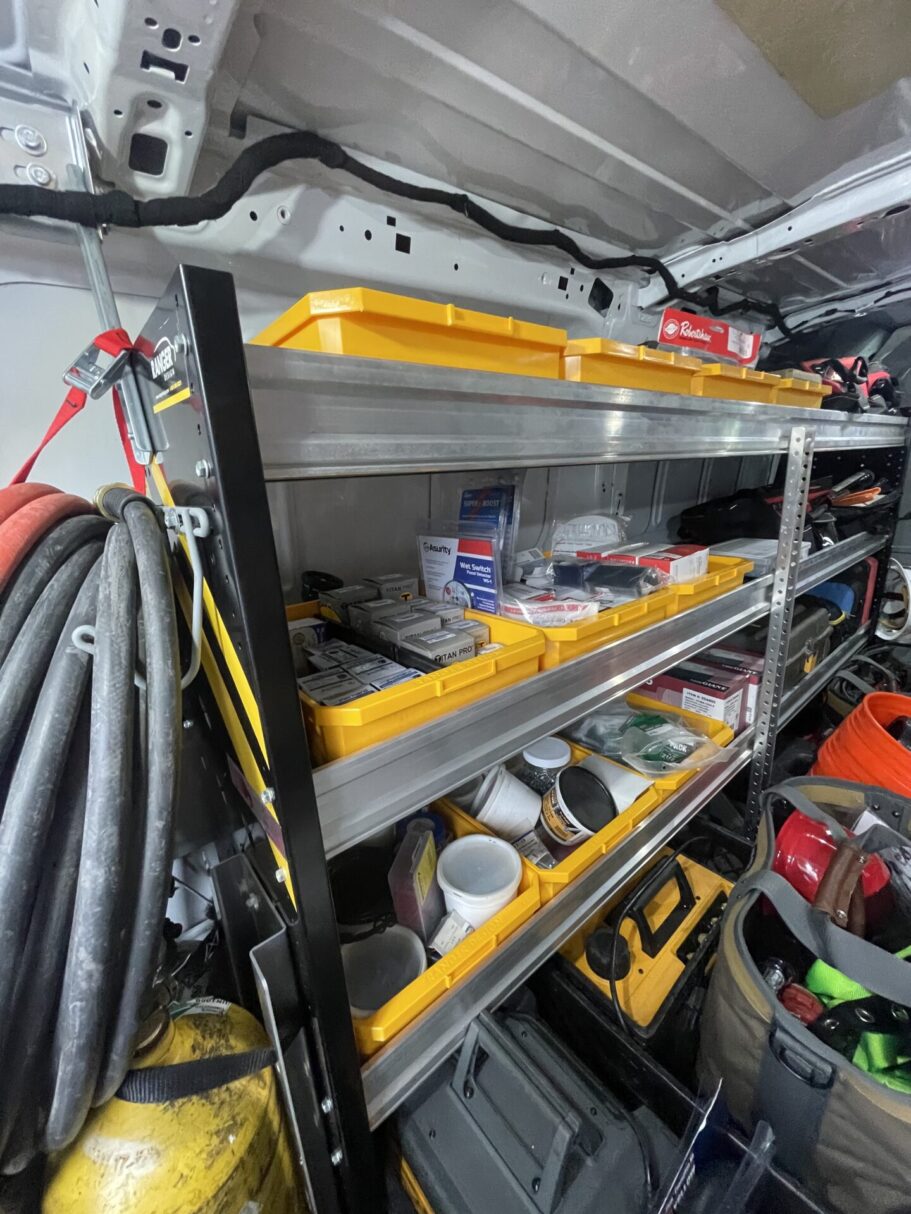Every fleet manager knows the importance of maintaining an organized truck stock. With trucks often serving as mobile warehouses, it’s crucial to have a system in place that ensures every item is accounted for. Proper truck stock management not only ensures efficiency but also reduces costs and improves customer satisfaction. According to a report by ToolsGroup, a typical Transportation Management System (TMS) can utilize 98% or greater of a truck’s capacity when optimized, as compared to the usual 90-95% utilization, showcasing the immediate impact on operational efficiency for companies with high volume of truck loads.
This article delves into the best practices for auditing, barcoding, and organizing your truck stock.
What is truck stock management?
Truck stock management is a specialized inventory control tailored for service trucks. These trucks often operate as mobile warehouses, carrying essential tools, equipment, and parts required for various jobs. The primary objective of truck stock management is to ensure that these mobile inventories are well-organized, easily traceable, and consistently replenished. In today’s technologically advanced era, integrating barcoding and contemporary inventory management systems has revolutionized this process. These technologies empower fleet managers to monitor stock levels in each truck in real time. This real-time visibility is crucial because it guarantees that technicians are always equipped with the necessary tools and components for their tasks, eliminating the risk of job delays due to missing items.Why is truck stock management crucial?
Truck stock management is not just a logistical necessity; it’s a strategic component of a successful service-oriented business. Its importance can be understood from multiple perspectives:
- Operational Efficiency: At the heart of truck stock management is the promise of streamlined operations. When each service truck is organized and its inventory is meticulously managed, technicians can swiftly locate the tools and parts they require. This efficiency reduces the time wasted on searching for items or making unnecessary trips back to a central warehouse, leading to more jobs completed within a given timeframe.
- Cost Savings: Mismanaged truck stock can lead to several financial pitfalls. Overstocking means capital is tied up in unused inventory, while understocking can result in costly emergency orders or expedited shipping fees. An effective truck stock management system strikes the right balance, ensuring that resources are utilized optimally and unnecessary expenses are curtailed. By maximizing truck shipments, companies can ship the same volume on fewer trucks by utilizing up to 98% of a truck’s capacity, thus significantly reducing transportation costs. A case study highlighted a potential savings of 10.5% on yearly transportation costs along with an additional 4.6% savings with the establishment of three new warehouses, showcasing the substantial cost savings that can be achieved through smart truck stock management strategies.
- Customer Satisfaction: In the service industry, time is indeed of the essence, and customers greatly value prompt and efficient service. When technicians have a well-managed truck stock at their disposal, they are better equipped to address and resolve issues swiftly. This meets and often exceeds customer expectations, leading to higher satisfaction rates and fostering customer loyalty. Effective truck stock management ensures that technicians can complete repairs in one visit, reduces the necessity for additional trips to supply stores, and significantly enhances inventory efficiency. Such meticulous management of truck stock is a cornerstone in elevating customer satisfaction and by extension, nurturing long-term customer relationships.
Truck stock management tips
Comprehensive Inventory Audits
The cornerstone of effective truck stock management is a thorough and regular audit. Before embarking on this task, you must arm yourself with the necessary tools: an up-to-date inventory list, a reliable barcode scanner, and a tailored checklist for each truck. The essence of the audit lies in the physical counting of every item present in the truck and juxtaposing this count with the records in the inventory system. The integration of barcode scanners in this process is invaluable. Not only do they authenticate each item, but they also bolster accuracy, facilitating the swift identification of items that may be absent or in surplus. It’s crucial to meticulously document any inconsistencies between the physical count and the system’s records. Post-audit, a review of these discrepancies is essential, leading to necessary adjustments in the inventory records. Furthermore, any substantial inconsistencies warrant a deeper investigation to ascertain their root causes.Barcode Integration
The advent of barcoding has been transformative for truck stock management, ushering in a new era of efficiency. The journey begins with choosing the appropriate barcode type. While 1D barcodes cater to basic data needs, their 2D counterparts, especially QR codes, are adept at encapsulating more intricate information. It’s a non-negotiable that every item within the truck stock should bear a barcode. In instances where items aren’t pre-labeled, there are software solutions adept at generating unique barcodes. But barcoding isn’t just about labels; the scanners play an equally pivotal role. Investing in scanners that meld seamlessly with the overarching inventory management system is crucial. This synergy ensures real-time inventory updates, drastically diminishing the scope for manual data entry blunders. However, technology is only as good as its users, making training indispensable. Every team member, from those in the warehouse to those on the field, should be proficient in the nuances of the barcode system, encompassing everything from the basics of scanning to advanced troubleshooting.Strategic Organization
Organization Techniques for Truck Stock play a pivotal role in ensuring smooth operations. Each item or category of items should have a designated space within the truck. This systematic arrangement ensures that items are always returned to their correct spot, making them easier to find. Organizational tools, such as shelving units, bins, and drawer organizers, can be invaluable in keeping items neatly arranged. Clear bins, in particular, offer the advantage of easily viewing their contents. Beyond barcoding, clear and readable labels can further aid in the quick identification of items. As stock evolves or new items are added, it’s essential to reevaluate and adjust the organization system to fit current needs. Encouraging feedback from staff, especially drivers and technicians, can provide valuable insights into refining the organization’s system.GET STARTED TODAY
Ready to buy & manage
materials better?
Schedule some time with a materials expert.



